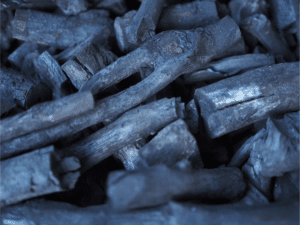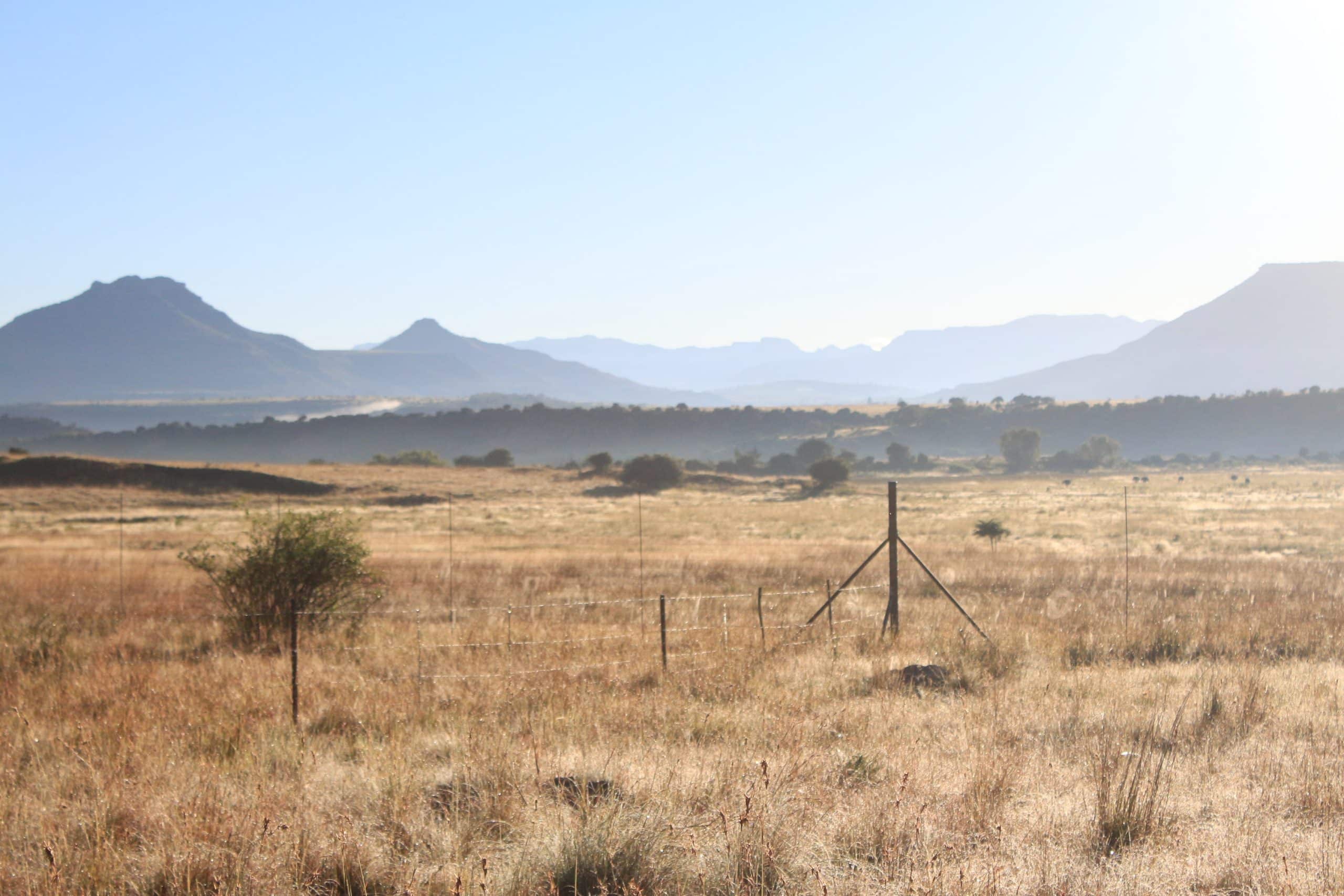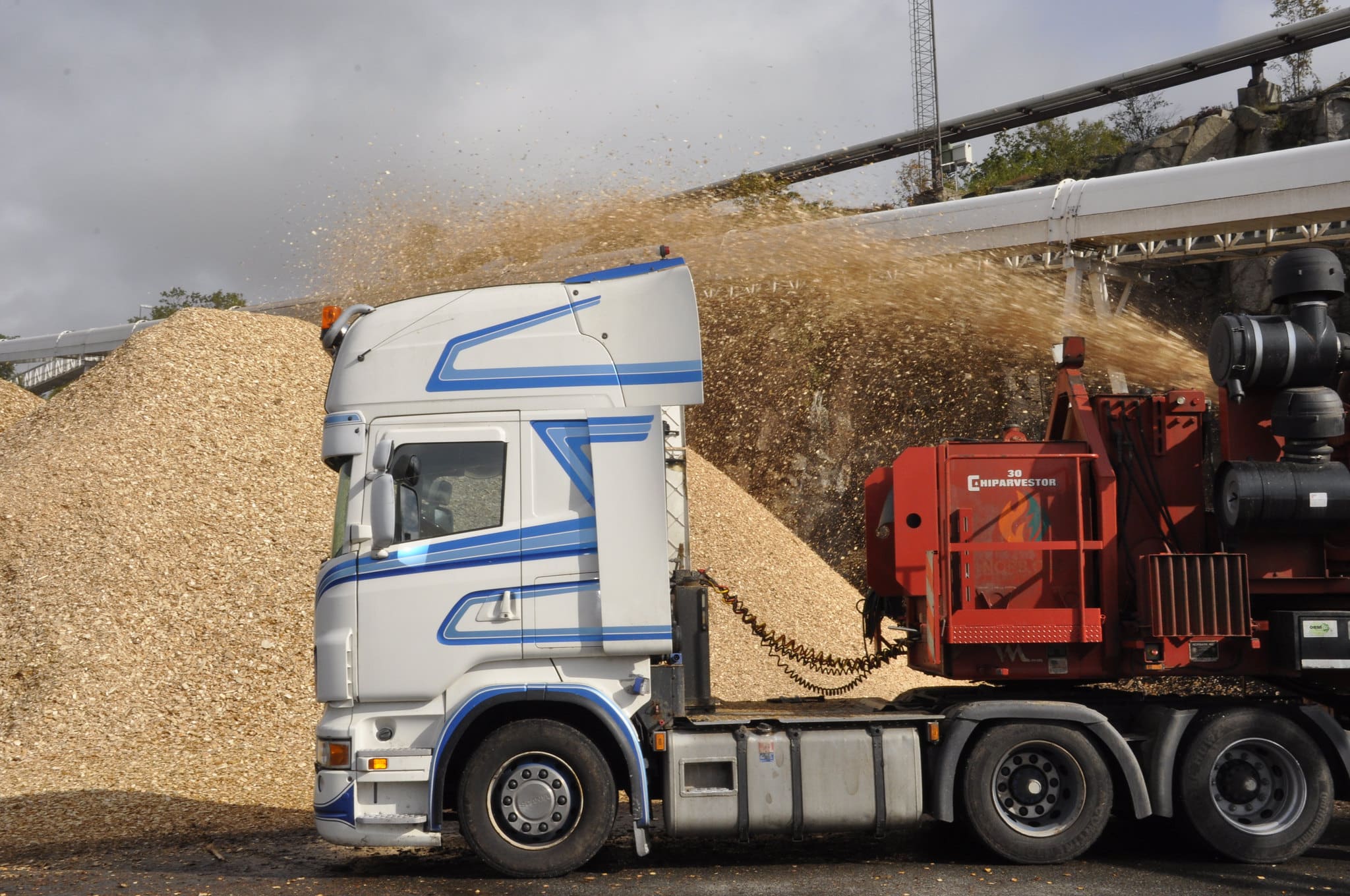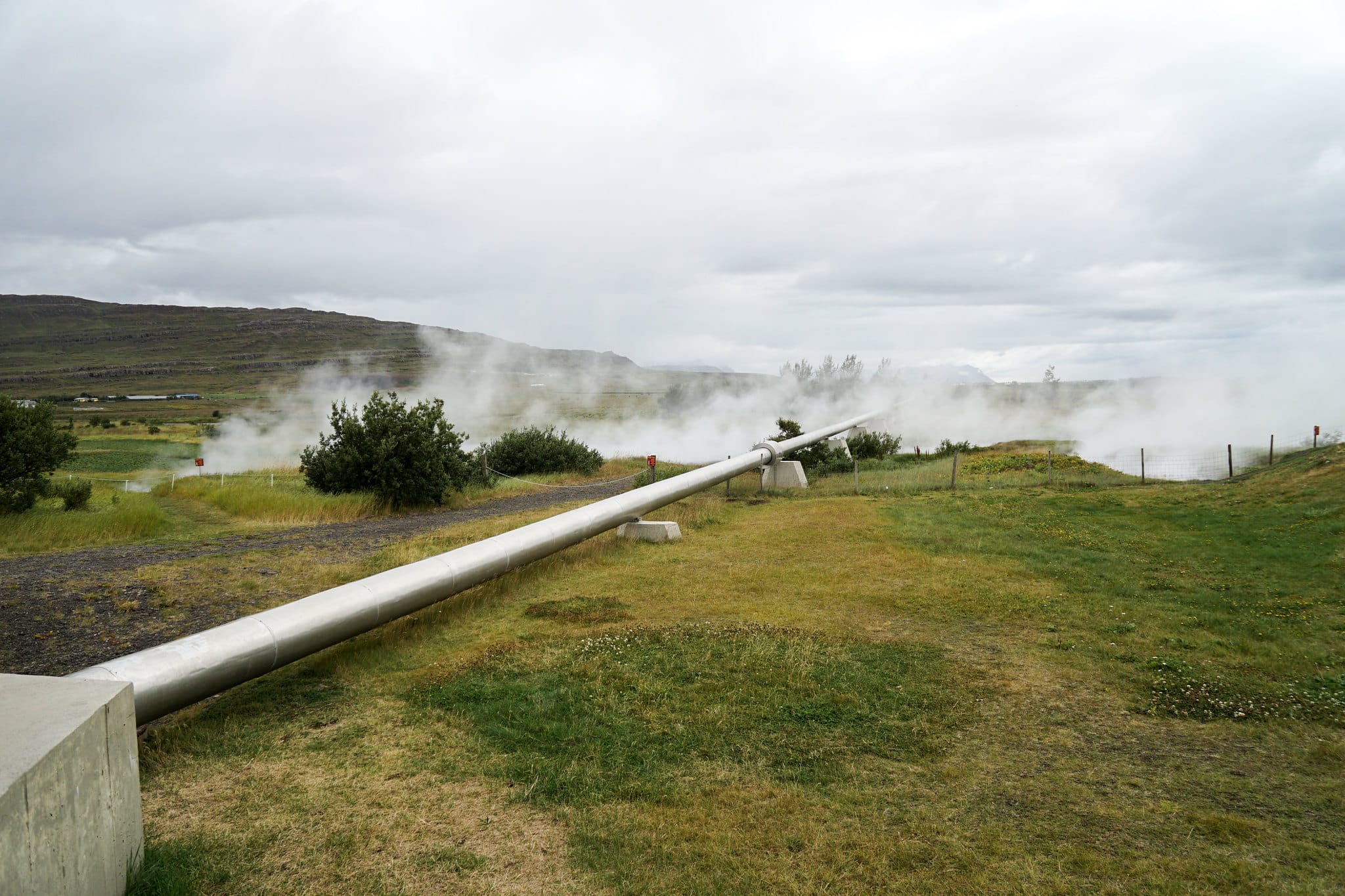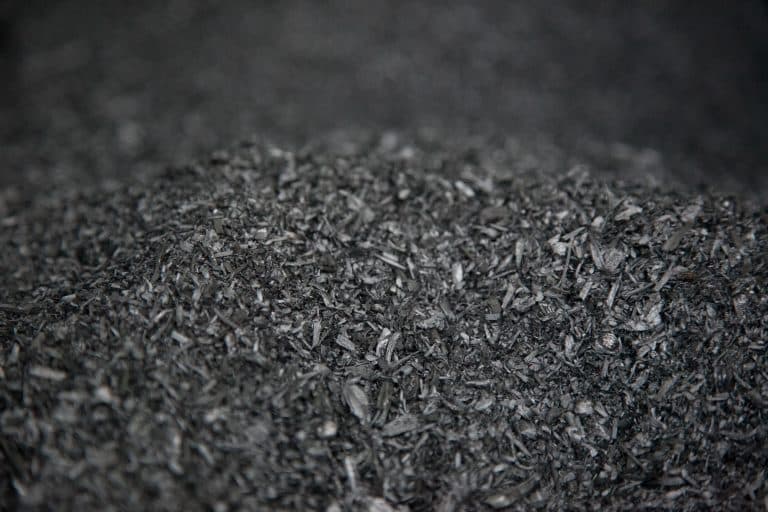Biochar
Type
Areas of deployment
Proposal

Featured project
Show on map
Latest technology update
Show update
Description and purpose of the technology
Biochar is a Carbon Dioxide Removal (CDR) technology that is produced by heating biomass at very high temperatures (up to 900°C) in low oxygen conditions. This transformation process is known as pyrolysis, and the resulting biochar is a solid charcoal-like substance which can be mixed into soil, where the carbon is theoretically stored and/or absorbed by plants. Large-scale deployment would require very large quantities of biomass, such as wood and forestry and agricultural residues.
Biochar is also promoted as a solution to soil degradation and low crop yields, although its behavior in different soil types and conditions is far from being fully understood. The chemical composition, properties and durability of biochar are also highly variable and inconsistent depending on where and how it is produced, because there are a large number of variables, such as biomass feedstock type, pyrolysis temperature and process time, as well as soil properties, climate conditions and application rates in the areas where the biochar is applied to soils. As a result, the measured effects of biochar on soil carbon and fertility in field trials are often contradictory, with outcomes that can be positive, negative or neutral. [1] Biochar proponents also suggest that it should be produced in pyrolysis plants that recover energy from the gas and/or oil that is produced alongside the biochar, but such systems have not been technically proven at a commercial scale. [2]
The long-term effects of biochar in soils have not been researched, but biochar proponents point to Amazonian black soils known as terra preta, where Indigenous communities buried large amounts of organic matter to enhance soil fertility. Radiocarbon dating suggests that the organic remnants date back thousands of years, but such tests do not clarify the initial quantity of organic matter applied to the soils. [3] Studies assume that only a small share—about one fifth of the carbon absorbed by plants through photosynthesis—can be stored by transforming biomass into biochar, because a proportion of the biomass breaks down into gaseous and liquid components. It is also important to bear in mind that the production process is energy-intensive. [4]
Therefore, in order to have an impact on global greenhouse gas concentrations, biochar would be produced on an industrial scale, which would require large land areas of land for biomass plantations and demand a huge amount of energy inputs. The demand for land would compete directly with food production, and thus impact particularly heavily on peasant and Indigenous territories and livelihoods, while the additional demand for renewable electricity would have implications for the transition away from fossil fuels. As a result, large-scale biochar production could increase both food and renewable energy prices.
Actors involved
Biochar has received support from fossil fuel companies such as Shell, ExxonMobil, Chevron, and Canadian tar sands industry companies like Cenovus and Conoco Philipps. The Bill and Melinda Gates Foundation have also funded biochar projects, and carbon offset markets have recently caused biochar research initiatives and commercial-scale projects to proliferate through the sale of carbon credits. However, despite extensive funding, biochar production has still not been developed on a larger scale.
Whilst small-scale biochar projects in the Global South in particular have multiplied, few have been accompanied by scientific studies, and many appear to serve mainly as attempts to attract greater investment for the industry as a whole. Biochar research is increasingly being organized by interregional biochar initiatives and financed with public funds in Europe, Australia, China and in the USA. Many biochar initiatives and biochar producers are members of the US-based International Biochar Initiative (IBI), which has many members from Asia and Northern America. IBI organizes annual biochar conferences and actively promotes the commercialization of biochar production and the sale of carbon credits through various offset markets. [5]
Impacts of the technology
In 2010, members of IBI published an article in Nature Communications suggesting that 12% of the world’s annual greenhouse gas emissions could be offset with “sustainable biochar.” [6] This figure has been quoted extensively, but the fact that the article assumed that 556 million hectares of land would need to be converted to biochar production, an area 1.7 times the size of India, is less frequently mentioned.
Many biochar proponents claim that feedstocks could focus on “wastes and residues,” but their potential is very limited. For example, to achieve 1% of Germany’s greenhouse gas reduction target for 2030 through biochar production, all of the solid and fermentable biomass available for harvest each year in Germany would need to be pyrolyzed. [8] These factors confirm fears that a large global biochar production scale-up would require land-conversion to industrial, chemical-intensive, monoculture plantations on a vast scale, with large impacts on peasant and Indigenous livelihoods, biodiversity and ecosystems. [7]
Biochar proponents also claim that burning biomass is “carbon neutral” because the carbon released during pyrolization will be reabsorbed as new trees or crops grow. However, only about one fifth of the carbon absorbed by plants through photosynthesis can be transformed into biochar. On top of this, some studies do not support the claim that biochar remains stable in soils, and instead have found carbon emissions from biochar amended soils to be greater. Lifecycle assessments of biochar production also leave little room for optimism, due to factors like the high energy requirements of pyrolysis temperatures, the need for the biomass to be dry, biomass transport distances and the costs of soil incorporation. [9]
A report produced by the European Commission points out that the large-scale production and application of biochar would compete with biomass necessary for building up soil humus, and that biochar does not directly feed soil organisms. It also expresses concerns about the potential for widespread soil contamination with toxins such as polycyclic aromatic hydrocarbon (PAHs), dioxins, polychlorinated biphenyls (PCBs) and heavy metals. [10]
It is also important to note that there is no such thing as “waste” in ecosystems. In forests, for example, everything is recycled through decay, which supports regeneration and regrowth. In many countries, the definition of waste in legislation has been expanded to include virtually any wood that is not valued as saw logs, allowing timber harvests to become more intensive and destructive, and removing ever greater quantities of biomass from forests. In agriculture, there are often better, more ecologically sustainable options for using residues, such as compost, mulch and animal fodder and bedding. Industrial forestry and agricultural practices have already wreaked havoc on ecosystems; creating a market for the “waste” products of unsustainable industries is not a step in the right direction. [11]
Reality check
Despite concerns around the impacts of biochar production and unanswered questions about its effectiveness, the number of biochar projects has continued to grow worldwide. Currently, there are at least 71 biochar trials—many of them on the scale of laboratories and greenhouses—taking place or that have been recently completed worldwide, with a number of pilot pyrolysis plants being built. [12] Allied Offsets also lists 236 biochar companies active in CDR offset markets, representing 28% of all CDR companies—the largest of any CDR methodology. [13] However, scientific studies show that the effects of biochar on soil carbon and soil fertility in field trials are contradictory and that the climate mitigation potential of biochar is very limited due to the large quantities of biomass needed.
Further reading
Biofuelwatch, Biochar: A critical perspective, https://www.biofuelwatch.org.uk/2024/biochar-briefing/
Biofuelwatch, What have we learned about biochar since Biofuelwatch 2011 report was published?, https://www.biofuelwatch.org.uk/wp-content/uploads/biochar-briefing-2020.pdf
Biofuelwatch, Biochar’s unproven claims fact sheet, http://www.biofuelwatch.org.uk/wp-content/uploads/Biochar-3-pager7.pdf
Declaration: ‘Biochar,’ a new big threat to people, land, and ecosystems, https://www.rainforest-rescue.org/news/1150/declaration-biochar-a-new-big-threat-to-people-land-and-ecosystems
The African Biodiversity Network and Biofuelwatch, Biochar Land Grabbing: The impacts on Africa, http://www.biofuelwatch.org.uk/wp-content/uploads/biochar_africa_briefing2.pdf
ETC Group and Heinrich Böll Foundation, Geoengineering Map, https://map.geoengineeringmonitor.org/
End notes
[1] Erickson (2016) Interest in biochar surges, in: Chemical & Engineering News, Vol. 94(10): 44, https://cen.acs.org/articles/94/i10/Interest-biochar-surges.html; Ernsting (2011) Biochar: Unfulfilled promises in Cameroon, in Pambazuka News, published online: December 14, 2011, https://www.pambazuka.org/governance/biochar-unfulfilled-promises-cameroon; Fuss, et al. (2018) Negative emissions-Part 2 : Costs, potentials and side effects, in: Environmental Research Letters, Vol. 13(6), https://iopscience.iop.org/article/10.1088/1748-9326/aabf9f/meta
[2] Ernsting (2013), Biochar: a cause for concern?, in: The Ecologist, published online: July 24, 2013, https://theecologist.org/2013/jul/24/biochar-cause-concern; Zhang, et al. (2019) Biochar for environmental management: Mitigating greenhouse gas emissions, contaminant treatment, and potential negative impacts, in: Chemical Engineering Journal, Vol. 373: 902 – 922, https://www.sciencedirect.com/science/article/pii/S1385894719311635?via%3Dihub
[3] Teichmann (2014) Klimaschutz durch Biokohle in der deutschen Landwirtschaft: Potentiale und Kosten, in: DIW Wochenbericht, Vol. 1+2: 3 – 14, https://www.diw.de/de/diw_01.c.458412.de/publikationen/wochenberichte/2014_01/klimaschutz_durch_biokohle_in_der_deutschen_landwirtschaft_potentiale_und_kosten.html; Sohi, et al. (2010) A Review of Biochar and Its Use and Function in Soil, in: Advances in Agronomy, Vol. 105: 47 – 82
[4] Ibid (Teichmann (2014)); Lehmann (2007), A handful of carbon, in: Nature, Vol. 447: 143 – 144, https://www.nature.com/articles/447143a
[5] Hone (2017) The geo-engineering taboo, in: energypost, published online: June 26, 2017, https://energypost.eu/the-geo-engineering-taboo/; Desmog, How the Biochar Lobby Pushed for Offsets, Tar Sands, and Fracking Reclamation Using Unsettled Science, in: DesmogBlog, https://www.desmogblog.com/biochar-lobby-offsets-tar-sands-fracking-reclamation-unsettled-science; Biofuelwatch (2013) Biochar’s unproven claims, Factsheet, http://www.biofuelwatch.org.uk/2014/biochar-3pager/; ETC Group and Heinrich Böll Foundation (2020) Geoengineering Map, https://map.geoengineeringmonitor.org/
[6] Woolf, et al. (2010), Sustainable biochar to mitigate global climate change, in: Nature Communications, Vol. 1(56), https://www.nature.com/articles/ncomms1053
[7] Ibid (Ernsting (2013)); Ndameu & Biofuelwatch (2011), Biochar Fund Trials In Cameroon Hype And Unfulfilled Promises, Biofuelwatch, http://www.biofuelwatch.org.uk/wp-content/uploads/Biochar-Cameroon-report1.pdf
[8] Ibid (Teichmann (2014))
[9] Ibid (Teichmann (2014), Lehmann (2007), Zhang, et al. (2019)); Gurwick (2013) A Systematic Review of Biochar Research, with a Focus on Its Stability in situ and Its Promise as a Climate Mitigation Strategy, in: PLOS ONE, Vol. 8(9), e75932, https://journals.plos.org/plosone/article?id=10.1371/journal.pone.0075932
[10] EGTOP (2018) Final report on fertilizers (III), European Commission: Directorate-General for Agriculture and Rural Development, https://ec.europa.eu/info/sites/info/files/food-farming-fisheries/farming/documents/final-report-egtop-fertilizers-iii_en.pdf
[11] Smolker (2013) Biochar: Black Gold or Just Another Snake Oil Scheme?, in: Earth Island Journal, published online: September 18, 2013, http://www.earthisland.org/journal/index.php/elist/eListRead/biochar_black_gold_or_just_another_snake_oil_scheme/
[12] ETC Group and Heinrich Böll Foundation (2020) Geoengineering Map, https://map.geoengineeringmonitor.org/
[13] Allied Offsets (2024), CDR Data, https://alliedoffsets.com/cdr-data/
Biochar
TIPO
Zonas de despliegue
Propuesta

Proyecto destacado
Mostrar en el mapa
Última actualización de la tecnología
Mostrar actualización
Descripción y propósito de la tecnología
Biochar is a Carbon Dioxide Removal (CDR) technology that is produced by heating biomass at very high temperatures (up to 900°C) in low oxygen conditions. This transformation process is known as pyrolysis, and the resulting biochar is a solid charcoal-like substance which can be mixed into soil, where the carbon is theoretically stored and/or absorbed by plants. Large-scale deployment would require very large quantities of biomass, such as wood and forestry and agricultural residues.
Biochar is also promoted as a solution to soil degradation and low crop yields, although its behavior in different soil types and conditions is far from being fully understood. The chemical composition, properties and durability of biochar are also highly variable and inconsistent depending on where and how it is produced, because there are a large number of variables, such as biomass feedstock type, pyrolysis temperature and process time, as well as soil properties, climate conditions and application rates in the areas where the biochar is applied to soils. As a result, the measured effects of biochar on soil carbon and fertility in field trials are often contradictory, with outcomes that can be positive, negative or neutral. [1] Biochar proponents also suggest that it should be produced in pyrolysis plants that recover energy from the gas and/or oil that is produced alongside the biochar, but such systems have not been technically proven at a commercial scale. [2]
The long-term effects of biochar in soils have not been researched, but biochar proponents point to Amazonian black soils known as terra preta, where Indigenous communities buried large amounts of organic matter to enhance soil fertility. Radiocarbon dating suggests that the organic remnants date back thousands of years, but such tests do not clarify the initial quantity of organic matter applied to the soils. [3] Studies assume that only a small share—about one fifth of the carbon absorbed by plants through photosynthesis—can be stored by transforming biomass into biochar, because a proportion of the biomass breaks down into gaseous and liquid components. It is also important to bear in mind that the production process is energy-intensive. [4]
Therefore, in order to have an impact on global greenhouse gas concentrations, biochar would be produced on an industrial scale, which would require large land areas of land for biomass plantations and demand a huge amount of energy inputs. The demand for land would compete directly with food production, and thus impact particularly heavily on peasant and Indigenous territories and livelihoods, while the additional demand for renewable electricity would have implications for the transition away from fossil fuels. As a result, large-scale biochar production could increase both food and renewable energy prices.
Actores involucrados
Biochar has received support from fossil fuel companies such as Shell, ExxonMobil, Chevron, and Canadian tar sands industry companies like Cenovus and Conoco Philipps. The Bill and Melinda Gates Foundation have also funded biochar projects, and carbon offset markets have recently caused biochar research initiatives and commercial-scale projects to proliferate through the sale of carbon credits. However, despite extensive funding, biochar production has still not been developed on a larger scale.
Whilst small-scale biochar projects in the Global South in particular have multiplied, few have been accompanied by scientific studies, and many appear to serve mainly as attempts to attract greater investment for the industry as a whole. Biochar research is increasingly being organized by interregional biochar initiatives and financed with public funds in Europe, Australia, China and in the USA. Many biochar initiatives and biochar producers are members of the US-based International Biochar Initiative (IBI), which has many members from Asia and Northern America. IBI organizes annual biochar conferences and actively promotes the commercialization of biochar production and the sale of carbon credits through various offset markets. [5]
Impactos de la tecnología
In 2010, members of IBI published an article in Nature Communications suggesting that 12% of the world’s annual greenhouse gas emissions could be offset with “sustainable biochar.” [6] This figure has been quoted extensively, but the fact that the article assumed that 556 million hectares of land would need to be converted to biochar production, an area 1.7 times the size of India, is less frequently mentioned.
Many biochar proponents claim that feedstocks could focus on “wastes and residues,” but their potential is very limited. For example, to achieve 1% of Germany’s greenhouse gas reduction target for 2030 through biochar production, all of the solid and fermentable biomass available for harvest each year in Germany would need to be pyrolyzed. [8] These factors confirm fears that a large global biochar production scale-up would require land-conversion to industrial, chemical-intensive, monoculture plantations on a vast scale, with large impacts on peasant and Indigenous livelihoods, biodiversity and ecosystems. [7]
Biochar proponents also claim that burning biomass is “carbon neutral” because the carbon released during pyrolization will be reabsorbed as new trees or crops grow. However, only about one fifth of the carbon absorbed by plants through photosynthesis can be transformed into biochar. On top of this, some studies do not support the claim that biochar remains stable in soils, and instead have found carbon emissions from biochar amended soils to be greater. Lifecycle assessments of biochar production also leave little room for optimism, due to factors like the high energy requirements of pyrolysis temperatures, the need for the biomass to be dry, biomass transport distances and the costs of soil incorporation. [9]
A report produced by the European Commission points out that the large-scale production and application of biochar would compete with biomass necessary for building up soil humus, and that biochar does not directly feed soil organisms. It also expresses concerns about the potential for widespread soil contamination with toxins such as polycyclic aromatic hydrocarbon (PAHs), dioxins, polychlorinated biphenyls (PCBs) and heavy metals. [10]
It is also important to note that there is no such thing as “waste” in ecosystems. In forests, for example, everything is recycled through decay, which supports regeneration and regrowth. In many countries, the definition of waste in legislation has been expanded to include virtually any wood that is not valued as saw logs, allowing timber harvests to become more intensive and destructive, and removing ever greater quantities of biomass from forests. In agriculture, there are often better, more ecologically sustainable options for using residues, such as compost, mulch and animal fodder and bedding. Industrial forestry and agricultural practices have already wreaked havoc on ecosystems; creating a market for the “waste” products of unsustainable industries is not a step in the right direction. [11]
Visión realista
Despite concerns around the impacts of biochar production and unanswered questions about its effectiveness, the number of biochar projects has continued to grow worldwide. Currently, there are at least 71 biochar trials—many of them on the scale of laboratories and greenhouses—taking place or that have been recently completed worldwide, with a number of pilot pyrolysis plants being built. [12] Allied Offsets also lists 236 biochar companies active in CDR offset markets, representing 28% of all CDR companies—the largest of any CDR methodology. [13] However, scientific studies show that the effects of biochar on soil carbon and soil fertility in field trials are contradictory and that the climate mitigation potential of biochar is very limited due to the large quantities of biomass needed.
Lectura complementaria
Biofuelwatch, Biochar: A critical perspective, https://www.biofuelwatch.org.uk/2024/biochar-briefing/
Biofuelwatch, What have we learned about biochar since Biofuelwatch 2011 report was published?, https://www.biofuelwatch.org.uk/wp-content/uploads/biochar-briefing-2020.pdf
Biofuelwatch, Biochar’s unproven claims fact sheet, http://www.biofuelwatch.org.uk/wp-content/uploads/Biochar-3-pager7.pdf
Declaration: ‘Biochar,’ a new big threat to people, land, and ecosystems, https://www.rainforest-rescue.org/news/1150/declaration-biochar-a-new-big-threat-to-people-land-and-ecosystems
The African Biodiversity Network and Biofuelwatch, Biochar Land Grabbing: The impacts on Africa, http://www.biofuelwatch.org.uk/wp-content/uploads/biochar_africa_briefing2.pdf
ETC Group and Heinrich Böll Foundation, Geoengineering Map, https://map.geoengineeringmonitor.org/
Notas finales
[1] Erickson (2016) Interest in biochar surges, in: Chemical & Engineering News, Vol. 94(10): 44, https://cen.acs.org/articles/94/i10/Interest-biochar-surges.html; Ernsting (2011) Biochar: Unfulfilled promises in Cameroon, in Pambazuka News, published online: December 14, 2011, https://www.pambazuka.org/governance/biochar-unfulfilled-promises-cameroon; Fuss, et al. (2018) Negative emissions-Part 2 : Costs, potentials and side effects, in: Environmental Research Letters, Vol. 13(6), https://iopscience.iop.org/article/10.1088/1748-9326/aabf9f/meta
[2] Ernsting (2013), Biochar: a cause for concern?, in: The Ecologist, published online: July 24, 2013, https://theecologist.org/2013/jul/24/biochar-cause-concern; Zhang, et al. (2019) Biochar for environmental management: Mitigating greenhouse gas emissions, contaminant treatment, and potential negative impacts, in: Chemical Engineering Journal, Vol. 373: 902 – 922, https://www.sciencedirect.com/science/article/pii/S1385894719311635?via%3Dihub
[3] Teichmann (2014) Klimaschutz durch Biokohle in der deutschen Landwirtschaft: Potentiale und Kosten, in: DIW Wochenbericht, Vol. 1+2: 3 – 14, https://www.diw.de/de/diw_01.c.458412.de/publikationen/wochenberichte/2014_01/klimaschutz_durch_biokohle_in_der_deutschen_landwirtschaft_potentiale_und_kosten.html; Sohi, et al. (2010) A Review of Biochar and Its Use and Function in Soil, in: Advances in Agronomy, Vol. 105: 47 – 82
[4] Ibid (Teichmann (2014)); Lehmann (2007), A handful of carbon, in: Nature, Vol. 447: 143 – 144, https://www.nature.com/articles/447143a
[5] Hone (2017) The geo-engineering taboo, in: energypost, published online: June 26, 2017, https://energypost.eu/the-geo-engineering-taboo/; Desmog, How the Biochar Lobby Pushed for Offsets, Tar Sands, and Fracking Reclamation Using Unsettled Science, in: DesmogBlog, https://www.desmogblog.com/biochar-lobby-offsets-tar-sands-fracking-reclamation-unsettled-science; Biofuelwatch (2013) Biochar’s unproven claims, Factsheet, http://www.biofuelwatch.org.uk/2014/biochar-3pager/; ETC Group and Heinrich Böll Foundation (2020) Geoengineering Map, https://map.geoengineeringmonitor.org/
[6] Woolf, et al. (2010), Sustainable biochar to mitigate global climate change, in: Nature Communications, Vol. 1(56), https://www.nature.com/articles/ncomms1053
[7] Ibid (Ernsting (2013)); Ndameu & Biofuelwatch (2011), Biochar Fund Trials In Cameroon Hype And Unfulfilled Promises, Biofuelwatch, http://www.biofuelwatch.org.uk/wp-content/uploads/Biochar-Cameroon-report1.pdf
[8] Ibid (Teichmann (2014))
[9] Ibid (Teichmann (2014), Lehmann (2007), Zhang, et al. (2019)); Gurwick (2013) A Systematic Review of Biochar Research, with a Focus on Its Stability in situ and Its Promise as a Climate Mitigation Strategy, in: PLOS ONE, Vol. 8(9), e75932, https://journals.plos.org/plosone/article?id=10.1371/journal.pone.0075932
[10] EGTOP (2018) Final report on fertilizers (III), European Commission: Directorate-General for Agriculture and Rural Development, https://ec.europa.eu/info/sites/info/files/food-farming-fisheries/farming/documents/final-report-egtop-fertilizers-iii_en.pdf
[11] Smolker (2013) Biochar: Black Gold or Just Another Snake Oil Scheme?, in: Earth Island Journal, published online: September 18, 2013, http://www.earthisland.org/journal/index.php/elist/eListRead/biochar_black_gold_or_just_another_snake_oil_scheme/
[12] ETC Group and Heinrich Böll Foundation (2020) Geoengineering Map, https://map.geoengineeringmonitor.org/
[13] Allied Offsets (2024), CDR Data, https://alliedoffsets.com/cdr-data/
